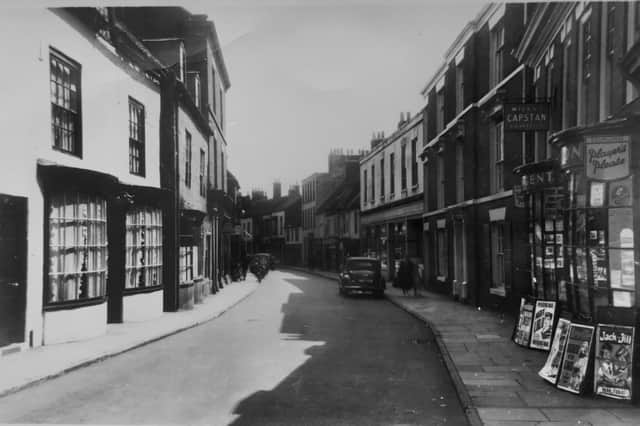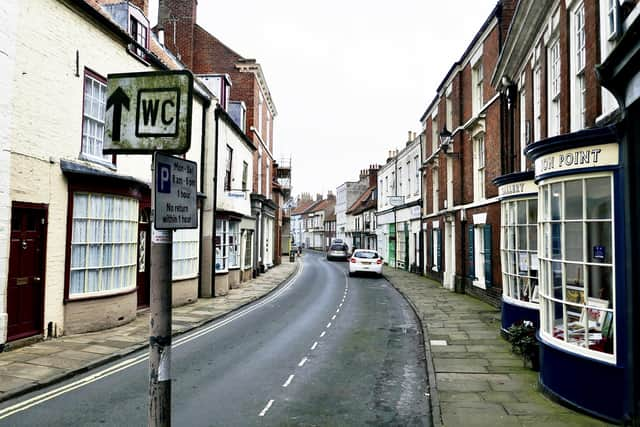The ‘Now and Then’ column with Aled Jones: Looking at Bridlington’s High Street


Mr Jones contrasts a postcard from the 1960s with a modern day photograph, and remarkably, there is very little change to the area overall.
Mr Jones said: “An old postcard can tell so many stories. This week’s one is no exception, since it features a shop on High Street that told a great many stories – through the magazines and newspapers it sold!
Advertisement
Hide AdAdvertisement
Hide Ad“The shop, a long-established printers and newsagents, was owned and run for years by the Edmund family. It operated from number 45 and is at present a fine art gallery.


“From the news billboards outside you can work out when this unfranked, non-posted card was produced. For example, the billboard urging readers to “Meet Lulu” definitely suggests a date of summer 1964, when the singer came into the spotlight with her standout version of The Isley Brothers’ tune “Shout.”
“This old-worldly shop, a building of special architectural and historic interest, originally dates from 1693 and was William Kent’s boyhood home. Note the elegant bow-fronted façade added in the late 18th century.
“Today the house is a central point of interest for thousands of visitors to the Old Town. Deservedly so, because William Kent is widely considered to be Bridlington’s most famous son.
Advertisement
Hide AdAdvertisement
Hide Ad“Born in 1685 William spent much of his early life on High Street and went on to become, not only a nationally renowned painter and architect, but one of the founders of English landscape gardening.
“Comparing the postcard with the modern day photograph, one can be mistaken in thinking that the black and white picture could almost have been taken yesterday. So slight are the differences. High Street is a place where time literally stands still due in no small way to it being a designated conservation area. Of course, historic conservation has not always been part of Britain’s fabric.
“Between the wars, many changes took place at the top end of High Street, with several houses demolished to make way for Scarborough Road.
“Luckily, the magnificent 17th century house called The Toft, right next door to William Kent’s childhood home, has survived any mutilation at all, apart from external alterations in the 1840s. It has stunning carved wooden features inside that need to be seen to be fully appreciated.
Advertisement
Hide AdAdvertisement
Hide Ad“It is timeless houses like The Toft that earned High Street its place in the annals of world movie history. The 2016 motion picture Dad’s Army had numerous scenes filmed on High Street, including the famous final parade. Its classic period charm allowed the makers to reproduce the exact feel of the 1940s, transforming Bridlington’s Old Town into the fictional Walmington-on-Sea.”